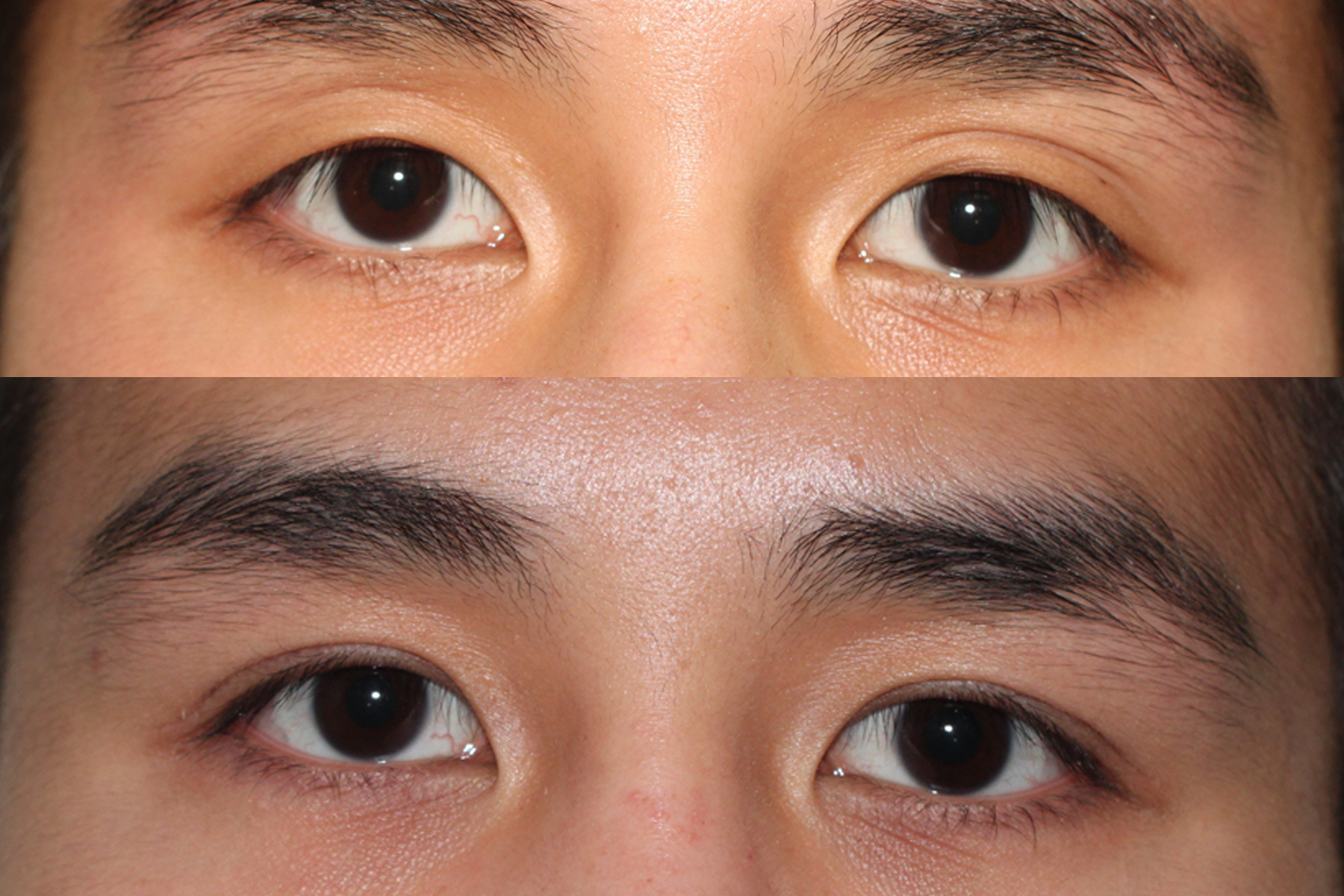
This is a nice example of a double eyelid\ surgery also known as Asian blepharoplasty. In this case the post operative photos are 5 months following the procedure. This young asian male patient had atypical upper eyelids. There was no crease at all on the right side and on the left, a pseudocrease was present quite high on the lid. Also unusual for a young asian eyelid was the absence of excess fat which actually made the eye look older than the patient’s 21 years (older eyes look sunken because of the loss of fat). The challenge in this double eyelid surgery patient was to create a natural appearing crease that was also symmetric between the eyes.
Just prior to the procedure, the anticipated and desired crease is marked. The resulting fold can be either “outside” or “inside”. This refers to where the crease/fold ends at the inner corner of the eye. In this double eyelid surgery patient the fold is “inside” which means that it ends on the inside of the epicanthal fold which if the fold of skin present at the inner corner of many asian eyelids. My preference is an “inside” fold because I feel that it appears more natural and ethno-appropriate. Once the excess skin has been removed – which is usually quite minimal in double eyelid surgery – a strip of muscle is taken which exposes the underlying fat pads and the levator aponerurosis – which is the structure that needs to be exposed in order to create the new fold. Once an appropriate amount of fat is removed, the skin is sutured to the exposed levator aponeurosis and the skin incsion is closed.
In one week the sutures are removed. During that period, the undersurface of the skin (the dermis) has become attached to the levator so that now, when the eyelid is opened, the skin also folds thereby creating an eyelid crease.
For more information on blepharoplasty click https://doctordenton.com/surgical-procedures/asian-cosmetic-surgery/
